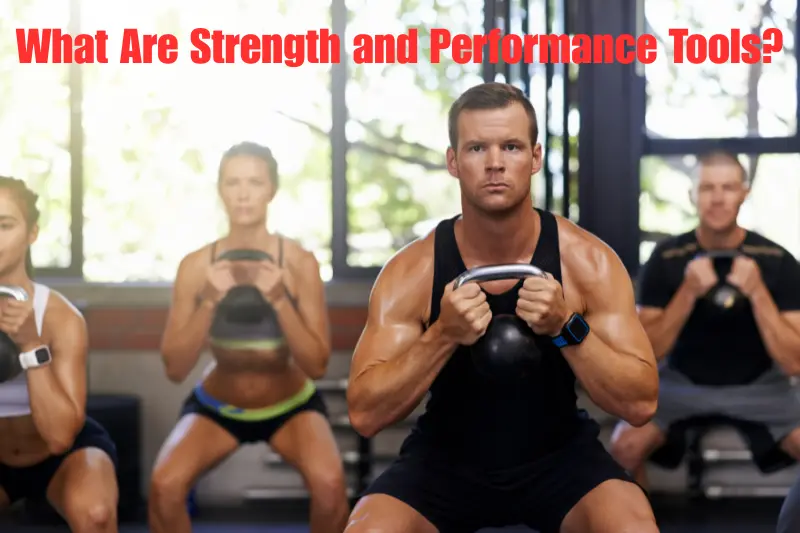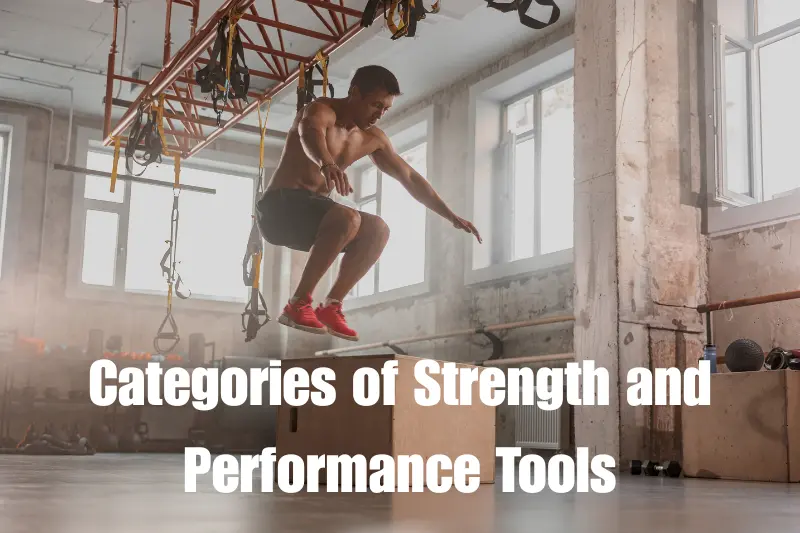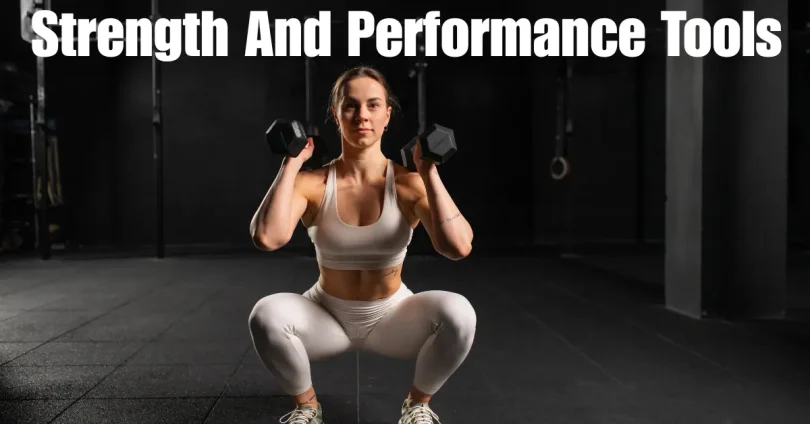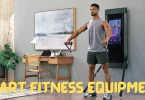In today’s fast-paced world, the pursuit of peak performance—whether in physical fitness, mental resilience, or professional productivity—is essential. To achieve these goals, various strength and performance tools are available to support, enhance, and optimize human potential.
Whether you’re an athlete, a business leader, or a professional in any other field, understanding and utilizing the right strength and performance tools can dramatically improve your output, health, and success. This guide explores the various categories of strength and performance tools and their applications in detail.
What Are Strength and Performance Tools?

Strength tools typically refer to instruments or devices that enhance physical or mental strength. Physical strength can include the ability to lift, move, or support heavy loads, while mental strength refers to resilience, focus, and the ability to cope with stress. Performance tools, on the other hand, are designed to optimize the efficiency and effectiveness of tasks, whether in sports, fitness, business, or personal development.
These tools help individuals and teams achieve higher levels of output and success, minimizing effort while maximizing results.
Categories of Strength and Performance Tools

1. Physical Strength and Performance Tools
Physical strength tools primarily focus on enhancing muscle mass, endurance, and overall fitness. They can also play a significant role in injury prevention, rehabilitation, and enhancing mobility. Whether you’re an elite athlete or someone looking to get in better shape, the right physical tools can support your training, performance, and recovery.
You may also like to read this:
Top 10 Tech Innovations Transforming Industries In 2025
Latest Technology Trends In 2025 You Should Know About
The Future Of Technology And Innovation Explained
Body Optimization Tech For Better Health In 2025
The Best Smart Fitness Equipment For Every Workout
Best Wearable Fitness Trackers 2025: Monitor Your Health
a. Free Weights (Dumbbells, Barbells, Kettlebells)
Free weights are the foundation of strength training. They provide resistance for building muscle mass and improving strength, targeting different muscle groups for a balanced physique.
- Dumbbells: Versatile tools that can be used for both upper and lower body exercises, targeting small muscle groups and improving coordination.
- Barbells: Used for heavier lifts like squats, deadlifts, and bench presses, barbells are excellent for building overall strength.
- Kettlebells: These are great for improving strength, endurance, and coordination. Kettlebell swings, snatches, and cleans engage the whole body and help improve functional strength.
Benefits:
- Promote muscle hypertrophy (growth).
- Improve muscle tone and endurance.
- Enhance balance, coordination, and stability.
b. Resistance Bands
Resistance bands are elastic bands that offer adjustable resistance during exercises. They are lightweight, portable, and highly effective for toning, strengthening, and stretching.
- Portable: Resistance bands can be used anywhere, making them ideal for at-home workouts.
- Versatility: Bands can target multiple muscle groups and be used for stretching, strength training, and rehabilitation.
Benefits:
- Improve muscle strength and flexibility.
- Help in injury prevention and rehabilitation.
- Increase blood flow and stimulate muscle fibers more effectively than static resistance machines.
c. Weight Machines
Weight machines are fixed apparatus that use pulleys, levers, or weight stacks to provide resistance in a controlled and isolated manner. Machines are often safer for beginners as they guide movement patterns, reducing the risk of injury.
- Isolation Exercises: Weight machines focus on specific muscle groups, making them ideal for building muscle mass in a targeted way.
- Controlled Movements: Machines offer controlled and steady movements, which is especially important for beginners or those with injuries.
Benefits:
- Safe and effective for beginners.
- Isolate specific muscle groups for detailed muscle development.
- Often easier to use for individuals with limited range of motion or flexibility.
d. Bodyweight Training Tools (Pull-up Bars, TRX Suspension Trainers)
Bodyweight training tools make use of your body weight as resistance to build strength. Pull-up bars, parallel bars, and suspension trainers like TRX are popular tools for bodyweight exercises.
- Pull-up Bars: Perfect for targeting upper body muscles, especially the back, shoulders, and arms.
- Suspension Trainers (TRX): Using a system of ropes and handles, TRX allows for a range of bodyweight exercises that engage multiple muscle groups simultaneously.
Benefits:
- Improve functional strength.
- Enhance core stability and coordination.
- Effective for full-body workouts.
e. Mobility and Recovery Tools
Mobility tools such as foam rollers, massage balls, and stretching straps are key for enhancing flexibility and aiding in muscle recovery.
- Foam Rollers: Help release muscle knots, improve flexibility, and reduce soreness.
- Massage Balls: Target specific muscle areas to relieve tension and enhance recovery.
Benefits:
- Increase flexibility and range of motion.
- Relieve muscle soreness and tension.
- Reduce the risk of injury during workouts.
2. Mental Strength and Performance Tools
Physical performance may only get you so far. Mental resilience and clarity are equally critical for achieving high-level performance. Mental strength tools can help individuals enhance focus, emotional regulation, and stress management.
a. Meditation and Mindfulness Apps
Apps like Headspace, Calm, and Insight Timer guide users through meditation and mindfulness exercises that help reduce stress, improve focus, and increase self-awareness.
- Headspace: Provides guided meditations for stress reduction, sleep improvement, and productivity.
- Calm: Offers a variety of relaxation techniques, sleep stories, and mindfulness exercises.
Benefits:
- Improve mental clarity and focus.
- Reduce stress and anxiety.
- Enhance emotional regulation and resilience.
b. Biofeedback Devices
Biofeedback devices help individuals become more aware of their physiological responses (heart rate, muscle tension, etc.) and control them to enhance performance. These devices give real-time feedback to help users manage stress, improve focus, and achieve better mental states.
- HeartMath: Uses biofeedback technology to teach individuals how to control their heart rate variability, which can improve focus, reduce anxiety, and increase mental performance.
- Muse Headband: Monitors brain activity during meditation, providing feedback to improve focus and mental clarity.
Benefits:
- Enhance mental resilience and stress management.
- Improve concentration and cognitive performance.
- Aid in relaxation and mental recovery.
c. Cognitive Behavioral Therapy (CBT) Tools
CBT tools like Moodfit and Pacifica help users tackle negative thought patterns, manage emotions, and improve mental well-being. They are often used to support mental health and improve focus in high-stress situations.
- Moodfit: Helps users track their mood, identify triggers, and apply CBT techniques for mental clarity and stress relief.
- Pacifica: Provides resources for managing stress, anxiety, and depression using CBT-based approaches.
Benefits:
- Reduce anxiety and depression.
- Increase emotional stability and resilience.
- Enhance problem-solving and coping mechanisms.
3. Technological Strength and Performance Tools
In the digital age, performance optimization isn’t limited to physical strength. Technology plays a significant role in improving productivity, monitoring health, and optimizing performance.
a. Performance Monitoring Software (Fitness Trackers, Apps)
Fitness trackers like Fitbit, Garmin, and Polar track key health metrics such as steps, heart rate, calories burned, and sleep patterns.
- Fitbit: Offers heart rate monitoring, sleep tracking, and step counting to help users stay motivated and track their fitness goals.
- Garmin: Provides more advanced metrics such as VO2 max and training load for athletes.
Benefits:
- Track progress and health metrics.
- Set goals and measure improvement over time.
- Enhance overall fitness and performance.
b. Productivity Tools (Trello, Asana, Monday.com)
For professionals and businesses, productivity tools like Trello, Asana, and Monday.com help improve workflow, task management, and team collaboration.
- Trello: A visual tool that helps teams organize tasks using boards and cards.
- Asana: A robust platform for managing team projects, deadlines, and collaboration.
- Monday.com: An all-in-one work operating system to manage everything from projects to daily tasks.
Benefits:
- Streamline workflow and project management.
- Enhance team communication and collaboration.
- Increase organizational efficiency.
c. Performance Testing Tools (JMeter, LoadRunner, WebLOAD)
In technology and business, performance testing tools are essential for ensuring that systems, websites, and applications function optimally.
- Apache JMeter: Open-source software used to perform performance testing on web applications.
- LoadRunner: A tool that simulates user loads and measures system performance.
- WebLOAD: A performance testing tool that allows load testing for web and mobile applications.
Benefits:
- Identify bottlenecks and optimize application performance.
- Ensure high availability and reliability of services.
- Improve user experience and functionality.
4. Recovery Tools
Recovery is an essential part of any performance regimen. Proper recovery tools allow athletes and professionals to recover faster and get back to their peak.
a. Massage Guns (Theragun, Hypervolt)
Massage guns are handheld devices that provide deep tissue massage to alleviate muscle soreness and improve blood circulation. They are widely used for post-workout recovery.
- Theragun: Provides deep muscle treatment to release tension and enhance circulation.
- Hypervolt: A more affordable option for improving muscle recovery with various speed settings.
Benefits:
- Relieve muscle tightness and soreness.
- Improve circulation and reduce recovery time.
- Help in injury prevention.
b. Ice and Heat Therapy Tools
Cold therapy and heat therapy are common methods for speeding up recovery. Ice packs and heat pads can reduce swelling, alleviate pain, and promote healing.
- Ice Packs: Used for reducing inflammation and numbing pain in muscles and joints.
- Heating Pads: Ideal for relaxing muscles, increasing blood flow, and promoting healing.
Benefits:
- Aid in muscle recovery and pain management.
- Reduce inflammation and swelling.
- Accelerate healing processes.
c. Compression Devices
Compression garments and devices help improve blood circulation and reduce swelling in the muscles. Devices like NormaTec and compression socks are popular tools in sports recovery.
- NormaTec: Uses dynamic compression therapy to improve circulation and reduce muscle soreness.
- Compression Socks: Used to improve circulation and reduce swelling during long workouts or after intense physical activity.
Benefits:
- Improve circulation and reduce recovery time.
- Reduce swelling and inflammation.
- Enhance athletic performance and recovery.
Conclusion
Strength and performance tools are pivotal in maximizing physical, mental, and professional performance. Whether used for physical fitness, mental health, or professional productivity, these tools help individuals perform better, recover faster, and maintain peak efficiency.
By incorporating the right strength and performance tools into your routine, you can optimize your capabilities, whether in sports, business, or personal well-being.
FAQs
1. What are strength and performance tools?
These tools help enhance physical, mental, and professional performance by improving strength, endurance, focus, and recovery. They include fitness equipment, mental training apps, and productivity software.
2. What types of strength and performance tools are available?
They include:
Physical tools: Free weights, resistance bands, weight machines, bodyweight tools, and recovery devices.
Mental tools: Meditation apps, biofeedback devices, and CBT tools.
Tech tools: Fitness trackers, productivity software, and performance monitoring tools.
Recovery tools: Compression devices, ice/heat therapy, and massage guns.
3. How do free weights help in building strength?
Free weights, like dumbbells and barbells, build muscle mass and improve coordination by engaging multiple muscle groups during dynamic movements.
4. Can resistance bands be used for strength training?
Yes, they provide adjustable resistance, targeting muscle groups, improving flexibility, and enhancing endurance.
5. What is the benefit of using biofeedback devices?
Biofeedback devices help users manage stress, enhance focus, and improve mental clarity by monitoring physiological functions like heart rate and muscle tension.



